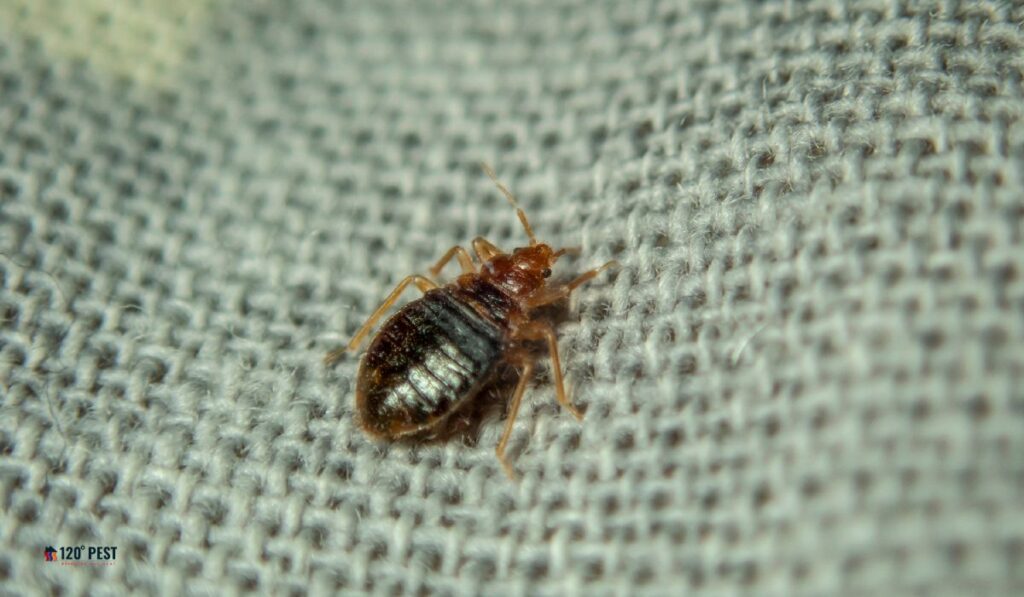Moving can be an exciting yet stressful endeavor, and the last thing anyone wants to deal with is the unwelcome presence of bed bugs.
These persistent pests can easily hitch a ride in moving trucks, spreading from one location to another.
To ensure a bed bug-free relocation, it’s crucial to take proactive measures and implement effective prevention strategies.
In this comprehensive guide, we will delve into the intricacies of avoiding bed bugs in your moving trucks, covering everything from understanding bed bug behavior to industry standards and community awareness campaigns.
Moving is often associated with new beginnings, but the last thing anyone wants to begin anew with is a bed bug infestation.
These tiny insects are notorious for their ability to hide in various places, and moving trucks provide an ideal environment for them to hitch a ride and infest new spaces.
In this article, we will explore the steps and strategies to ensure your moving truck remains bed bug-free throughout the relocation process.
Understanding Bed Bugs
Characteristics of bed bugs
Bed bugs are small, reddish-brown insects known for their flat bodies and nocturnal habits.
Understanding their physical characteristics is crucial for effective prevention.
Size and appearance
Measuring about the size of an apple seed, bed bugs are adept at hiding in cracks and crevices.
Their flat bodies enable them to squeeze into tiny spaces, making detection challenging.
Behavior and feeding habits
Being nocturnal feeders, bed bugs are most active during the night.
They feed on the blood of humans and animals, leaving behind itchy, red welts.
Identification of bed bug bites
Recognizing the signs of bed bug bites is essential for early detection and prevention.
Physical symptoms
Bed bug bites often result in red, itchy welts, resembling other insect bites.
Understanding these symptoms helps in identifying potential infestations.
Distinguishing bed bug bites from other insect bites
Knowing how to differentiate bed bug bites from those of other insects is crucial for targeted preventive measures.
Risks of Bed Bug Infestations in Moving Trucks
While bed bugs may seem like a minor nuisance, the consequences of a moving truck infestation can be far-reaching.
Spread of infestations to new locations

Bed bugs can easily move from one location to another via infested items, turning a localized problem into a widespread issue.
Financial consequences of transporting bed bugs
Dealing with a bed bug infestation post-move can incur significant financial costs, including extermination fees and potential damage to belongings.
Health concerns associated with bed bug bites
Beyond the financial impact, bed bug bites can cause allergic reactions and secondary infections, posing health risks to individuals.
Preparing Your Moving Truck
Prevention starts with thorough cleaning and inspection of the moving truck.
Thorough cleaning and inspection
Cleaning procedures for the truck interior
Cleaning should involve vacuuming, wiping surfaces, and eliminating potential hiding spots for bed bugs.
Checking for existing bed bug infestations
Prior to loading, a meticulous inspection should be conducted to identify and address any existing bed bug presence.
Choosing bed bug-resistant materials
Selecting materials known to deter bed bugs is crucial for preventing infestations.
Ideal truck materials to deter bed bugs
Certain materials are less attractive to bed bugs, minimizing the risk of infestations during transit.
Recommended sealants and coatings
Applying sealants and coatings that repel bed bugs can provide an additional layer of protection.
Proper Packing Techniques
Efficient and bed bug-resistant packing is essential for a successful relocation.
Using bed bug-proof packing materials
Investing in packaging materials designed to repel bed bugs is a proactive measure.
Types of packaging known to repel bed bugs
Materials such as tightly woven fabrics and plastics are less conducive to bed bug infestations.
Securing items to minimize hiding spots for bed bugs
Ensuring items are securely packed leaves fewer opportunities for bed bugs to find hiding spots.
Inspecting belongings before loading
Conducting a pre-move check on belongings helps identify and address potential bed bug presence.
Pre-move checks for bed bug presence
Inspecting furniture, clothing, and other items before loading is crucial for early detection.
Discarding infested items responsibly
If infestations are detected, prompt and responsible disposal of infested items is necessary.
Treating Furniture and Fabrics
Certain items are more prone to bed bug infestations and require special attention.
Pre-move treatments for bed bug-prone items
Steam cleaning procedures
Using steam to clean and treat furniture and fabrics is an effective method for bed bug prevention.
Bed bug repellent treatments for furniture
Applying repellents to furniture can deter bed bugs from making a home in these items.
Employing Professional Pest Control Services
For added assurance, enlisting professional extermination services is a wise move.
Benefits of professional extermination services
Professional pest control services bring expertise and specialized treatments to ensure thorough bed bug eradication.
When to schedule pest control treatments before a move
Strategic timing of pest control treatments is essential for optimal effectiveness.
Timing considerations for optimal effectiveness
Coordinating pest control treatments with the moving schedule maximizes the impact on bed bug populations.
Post-treatment precautions and timelines
Understanding the post-treatment precautions and timelines ensures a seamless moving process.
Maintaining Vigilance During the Move
Remaining vigilant throughout the loading and unloading process is crucial.
Regular checks during loading and unloading
Frequent inspections during the move help spot early signs of bed bug activity.
Spotting early signs of bed bug activity
Identifying early indicators allows for immediate action and prevents further infestations.
Immediate action in case of detection
Having a protocol in place for addressing bed bug detections ensures swift and effective response.
Post-Move Inspection and Preventive Measures
The journey doesn’t end with unloading – post-move inspections are equally vital.
Thoroughly inspecting the moving truck post-move
A comprehensive post-move inspection helps ensure no bed bugs have made it through the journey.
Implementing preventive measures for future moves
Educating Your Moving Team
Equipping your moving team with knowledge about bed bug prevention is crucial for collective efforts.
Training movers on bed bug awareness
Conducting training sessions familiarizes movers with bed bug prevention techniques and signs.
Providing guidelines for proactive prevention
Issuing guidelines ensures that every team member actively contributes to bed bug prevention efforts.
Informing Clients About Bed Bug Prevention
Open communication with clients is key to creating a bed bug-free moving experience.
Creating informational materials for clients
Providing clients with educational materials enhances awareness and cooperation in prevention.
Discussing preventive measures during client interactions
Including discussions about preventive measures during client interactions builds confidence and trust.
Addressing Bed Bug Concerns with Clients
Despite preventive measures, addressing client concerns professionally is essential.
Developing a protocol for handling customer concerns
Establishing a clear protocol ensures consistent and effective responses to customer concerns.
Offering reassurance and solutions
Providing reassurance and viable solutions demonstrates commitment to customer satisfaction.
Legal and Ethical Considerations
Beyond the practical aspects, legal and ethical considerations play a crucial role in bed bug prevention.
Obligations of moving companies to prevent bed bug infestations
Understanding legal obligations emphasizes the importance of proactive prevention measures.
Ethical handling of bed bug incidents with clients
Transparent and ethical handling of incidents fosters trust and credibility.
Industry Standards for Bed Bug Prevention
Adhering to industry standards ensures a collective effort toward bed bug prevention.
Compliance with regulations and guidelines
Staying compliant with regulations and guidelines minimizes legal risks and fosters industry integrity.
Continuous improvement in bed bug prevention practices
Regularly reviewing and enhancing preventive practices contributes to ongoing success.
Community Awareness Campaigns
Active participation in local initiatives contributes to broader bed bug awareness.
Participating in local initiatives for bed bug awareness
Engaging in community campaigns raises awareness and promotes shared responsibility.
Collaborating with other businesses to create a united front against bed bugs
Collaborating with other businesses strengthens the collective effort against bed bugs in the community.
Handling Bed Bug Complaints
Despite prevention efforts, complaints may arise, requiring a structured approach.
Establishing a protocol for addressing customer complaints
Having a clear protocol in place ensures consistent and fair resolution of bed bug-related issues.
Resolving issues promptly and professionally
Swift and professional resolution of complaints preserves the reputation of the moving company.
Investing in Ongoing Training
Staying current with bed bug prevention methods requires continuous education.
Regular training sessions for moving personnel
Conducting regular training sessions ensures that the moving team remains well-versed in the latest prevention techniques.
Staying updated on the latest advancements in bed bug prevention
Keeping abreast of advancements in bed bug prevention technology ensures the implementation of cutting-edge strategies.
Industry Collaboration for Research
Collaboration with researchers contributes to innovative bed bug prevention methods.
Collaborating with researchers for innovative prevention methods

Engaging with researchers fosters the development of new and improved prevention strategies.
Contributing to the development of industry-wide best practices
Active participation in the development of industry-wide best practices strengthens the overall prevention framework.
Conclusion
In conclusion, safeguarding your moving experience from bed bugs demands a thorough and proactive strategy.
From understanding bed bug characteristics to engaging professional pest control services, each step plays a crucial role in prevention.
For expert assistance and a bed bug-free move, contact us at 120 Pest.
Our team is dedicated to ensuring a seamless and bug-free relocation.
FAQs
Why is it important to be concerned about bed bugs during a move?
Bed bugs can easily infest moving trucks, leading to potential infestations in your new location. Prevention is crucial to avoid the stress and costs associated with dealing with bed bugs post-move.
What are the characteristics of bed bugs?
Bed bugs are small, flat, reddish-brown insects, about the size of an apple seed, with nocturnal habits. Their flat bodies allow them to hide in tiny spaces, making detection challenging.
How can I identify bed bug bites?
Bed bug bites often result in red, itchy welts similar to other insect bites. Recognizing these physical symptoms is essential for early detection.
Why should I be concerned about a bed bug infestation in my moving truck?
Bed bugs can spread to new locations, leading to financial consequences and potential health risks associated with their bites.
What cleaning procedures should I follow for the truck interior?
Thorough cleaning involves vacuuming, wiping surfaces, and eliminating potential hiding spots for bed bugs.
How can I choose bed bug-resistant materials for the moving truck?
Select materials that are less attractive to bed bugs and consider applying recommended sealants and coatings for additional protection.
What packing materials repel bed bugs?
Invest in materials like tightly woven fabrics and plastics that are less conducive to bed bug infestations.
How can I treat bed bug-prone items before moving?
Consider steam cleaning furniture and applying bed bug repellents to deter infestations.
When should I schedule pest control treatments before a move?
Coordinate treatments with the moving schedule and understand post-treatment precautions and timelines for optimal effectiveness.
How can I remain vigilant during the loading and unloading process?
Conduct regular checks for early signs of bed bug activity and have a protocol in place for immediate action if detection occurs.




